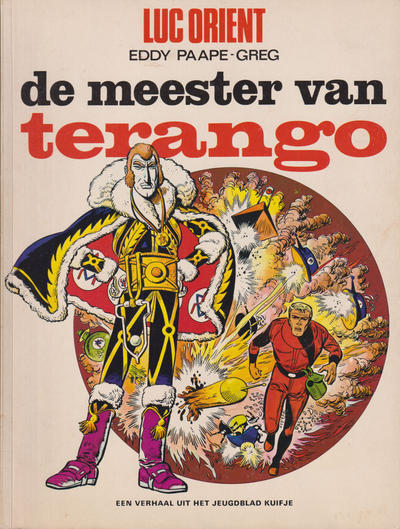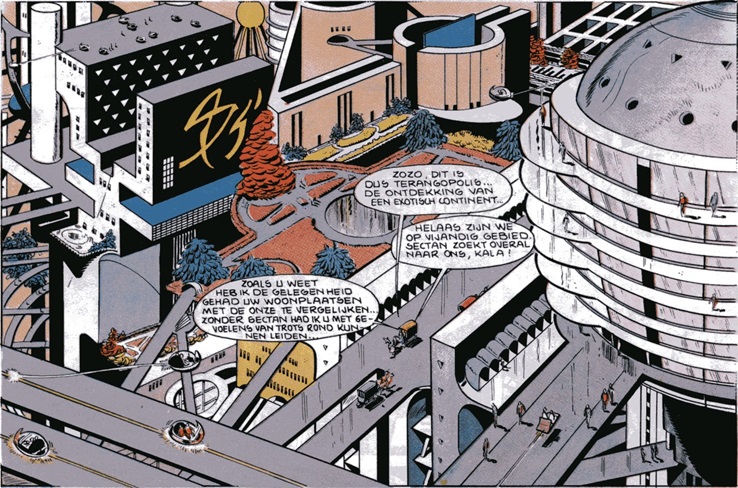Luc Orient and pals are brought to the planet Terango to dispose of its tyrant before he can invade the Earth!

From one of my favourite childhood sf series to another: Luc Orient. Another series I first read in my local library and this particular story was one of the first I can remember reading of it. Written by Greg, who seemed to have written almost every series published in Tintin between 1957 and 1993 or so. The art is by Eddy Paape, another Belgian comics veteran but who had mainly worked for Tintin rival Spirou before Luc Orient.
Luc Orient‘s titular protagonist is a blonde, brawny troubleshooter for Eurocristal, a fictional super science organisation. His best friend is professor Hugo Kala, leader of the lab and his girl Friday is Lora, who luckily does more than just playing the damsel in distress. Together they go on various science fictional adventures and managed to do so for some 18 albums, the first published in 1969, the last coming out in 1994.
What set Luc Orient apart from similar series is its remarkable use of continuity. European heroes tend to have their adventures in neat, 48 page album sized chunks, each a standalone story. Unlike American superhero stories continuing subplots are rare nor is there even the illusion of change most of the time. Tintin kept running around in his plus fours from 1929 to 1976 and the only thing that changed were the types of cars and air planes he used after all. But Luc Orient was different, as the first five stories did have a continuous plot.
In the first two albums, Luc Orient and co are on an expedition to Borneo to investigate the mysterious valley of the three suns, were ultimately they discover a crashed spaceship with a cargo of aliens in cryosleep onboard. After saving them in the second album, this story sees them return to Earth to call on Luc Orient to help them save their planet from its oppressor, the tyrant Sectan. The two volumes after that tell the story of how they managed to do so, after having struck the first blow in this one.

As a young boy reading this somewhere in the late seventies/early eighties, some of the very first science fiction I ever read this was mind altering. Especially the way Paape depicted Terango, this alien planet. Having discovered Isaac Asimov and his vision of a planet wide super city, the way Paape depicted Terangopolis is how I imagined Asimov’s Trantor would look like.
No Comments